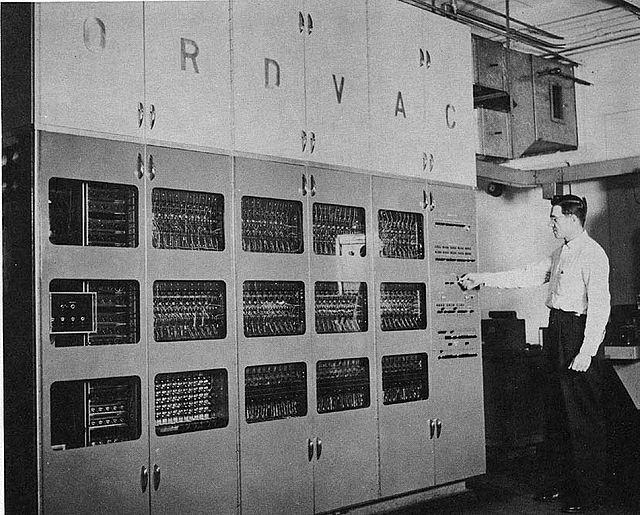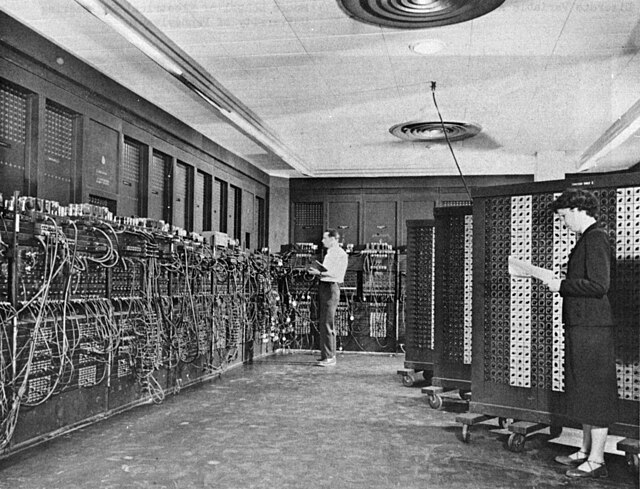The ORDVAC, is an early computer built by the University of Illinois for the Ballistic Research Laboratory at Aberdeen Proving Ground. It was a successor to the ENIAC. It was based on the IAS architecture developed by John von Neumann, which came to be known as the von Neumann architecture. The ORDVAC was the first computer to have a compiler. ORDVAC passed its acceptance tests on March 6, 1952, at Aberdeen Proving Ground in Maryland. Its purpose was to perform ballistic trajectory calculations for the US Military. In 1992, the Ballistic Research Laboratory became a part of the U.S. Army Research Laboratory.
ORDVAC
Ballistic Research Laboratory
The Ballistic Research Laboratory (BRL) was a leading U.S. Army research establishment situated at Aberdeen Proving Ground, Maryland that specialized in ballistics as well as vulnerability and lethality analysis. BRL served as a major Army center for research and development in technologies related to weapon phenomena, armor, electronic devices, and high-speed computing. In 1992, BRL was disestablished and its mission, personnel, and facilities were incorporated into the newly created Army Research Laboratory (ARL).
Betty Holberton (right foreground) programming the ENIAC computer in Philadelphia, Pennsylvania, BRL building 328 (1940s/1950s)
BRL developed the 16-inch HARP gun used for Project HARP



